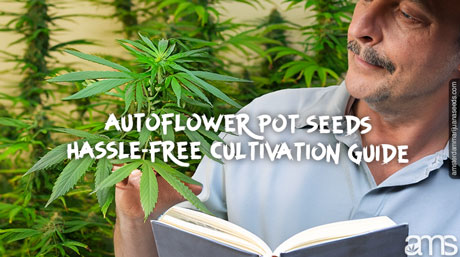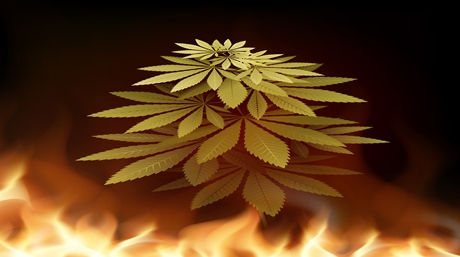 By:
Justin Time
By:
Justin Time
You’ve decided to try out growing autoflowers and need more information on what specific lighting they require. Or, possibly, you’ve already tried experimenting with these beautiful strains and need a refresher to start progressing again.
Whatever your reason, rest assured you’ve found the right guide, and we’re here to lend a helping hand. Today, we plan to cover all types of lighting, lighting cycles, and necessities that best suit your strain and cultivar. In addition, we want to ensure your plant grows healthy and is ready to harvest quickly!
Regarding autoflowers, generally, there isn’t a “best light” for these specific strains. However, we discussed in previous guides how resilient these guys are. And if you so desire, you can grow them with only sunlight and on whichever lighting cycle you choose.
Maybe you have experience with photoperiod cannabis and its sometimes strict regimens. It may not be too far of a stretch to consider providing your autoflower with the specific spectrum it needs during each growth stage.
When a daily plant is vegetative, growers typically use blue lights (400 to 550nm). And when it enters the flowering stage, growers will transition it to reddish-yellow lights (550 to 700nm).
Applying the same lighting techniques used on photoperiod strains with autoflower strains is perfectly acceptable.
The benefit of providing blue light during the vegetative period is that it aids in their growth. This process helps produce a shorter and stocky healthy plant. In addition, offering your plant reddish-yellow lights during the flowering stage promotes budding and results in larger dense flowers.
Regarding autoflowers, the consensus with most growers is that the optimum lighting range is between 18 to 24 hours. This is because light cycles are determined by hours of light versus darkness. An example would look like this: 18 hours of light and 6 hours of darkness (18/6).
With autoflower plants, there are four basic lighting schedules routinely used by most growers depending on their cultivar:
We will go more in-depth about these lighting cycles and the benefits each provides. But remember that though these are the more common cycles, what works best for your plants may differ.
Feel free to choose or adjust a lighting schedule at your discretion. But remember, if you decide to adjust from one cycle to another, be sure to do it gradually. You don’t want to overly stress your plant or plants. As long as your autoflowers receive 12 hours at minimum, you will receive the best results.
Before we dive into the types of light schedules, there is one topic we would like to discuss. In some of our other guides, we talked about how autoflower strains are a derivative of the strain ruderalis.
However, they were bred with either a sativa or an indica, making them stronger than their ruderalis lineage. And autoflowers do not rely on darkness to flower due to their genetic makeup. So some growers believe a 24/0 cycle works just fine.
In contrast, other growers claim that not providing a dark period will decrease the plants’ overall health. This, in turn, can lead to shorter plants and lessen their overall harvest.
Now we know a bit more about the types of lighting best suited for our autoflower friends. Likewise, we learned the potential impact the amount of darkness you provide them with makes.
Next, we have the 4 basic light schedules that growers recommend for autoflowering strains.
If you will grow your autos in a colder climate, a 24/0 lighting schedule is recommended. You will leave your HPS or LED lights on 24/7. Which, in turn, keeps your plants warm and removes the need for a timer.
Typically, the more light a plant is exposed to, the faster it grows. So this process allows your plant to develop quicker and diminishes the time spent regulating the light cycle since you will keep your lights on until harvest time.
With that in mind, this particular light cycle can tend to be a bit more pricey. However, this is why it is suggested for growers who use it out of necessity.
Pros
Cons
Quickly becoming the more favorable amongst autoflower growers is the 20/4 lighting cycle. This is because it offers a medium between the 18/6 and 24/0 cycles.
This lighting schedule is ideal while you’re not spending as much on electricity as you would with a 24/0 cycle. You also give your plants some rest they wouldn’t receive on a 24/0 cycle.
Compared to the 18/6 cycle, the 20/4 schedule gives your plants more light time. And as we just discussed, more light means faster growth. So if you place your autos on a 20/4, you will likely experience optimal yield results.
Pros
Cons
The 18/6 lighting schedule is the most frequently used cycle for autoflowering strains. It is also recommended for growers new to growing with autoflowers.
Probably one of the best things about this cycle is that it’s great for growers who live in hotter climates. Those with experience using the 18/6 suggest keeping your lights on during the night. And to save on energy, you can keep your lights off during the six hottest hours of the day.
Growers have reported that this lighting schedule uses up to 25% less electricity than previously mentioned cycles, with minimal electricity use and more rest time for your plants. The 18/6 method seems to be one of the most economically efficient and healthy ways to grow autoflowers.
Pros
Cons
Traditionally, the 12/12 lighting schedule is used for photoperiod plants. Growers use the 12/12 method to grow photoperiods alongside their autoflowers.
That said, this cycle is not recommended if you’re solely growing autoflower strains. We previously mentioned that, at minimum, your autoflowers should receive 18 hours of light daily. If you’re not provided your plants with at least the bare minimum, they will not grow to their full potential.
Remember, the lighter your plant is exposed, the more it will grow. So on a 12/12 cycle, autos will end up smaller and produce lesser yields.
Pros
Cons
Your autoflowers will not grow to their full capability and will produce less overall.
We’ve discussed the pros and cons for each cycle discussed today. However, it’s not hard to see why the top-recommended cycles for autos are the 18/6 and the 20/4.
Even so, there are still some other topics to consider when deciding which light cycle best suits your needs. So let’s take a closer look at some we’ve mentioned below.
Remember your location’s typical climate temperatures when deciding on a lighting cycle. As mentioned in the 24/0 cycle, it best suits colder climates. And again, the 18/6 cycle is best suited for hotter climates.
The light cycles discussed today touched on a few with higher energy costs. Growers with experience know that energy costs are just one of the many things to consider in your overall budget.
Keeping your budget in mind is always a good rule. In addition, it’s essential to factor in any costs that might occur before and during your growth op.
If your decided lighting cycle doesn’t require a timer, your schedule plays a significant role here. Time management is a necessity for all growers. Be sure to prepare whatever your day-to-day schedule might be with the tasks that come with growing.
Overall, there is no “best lighting cycle” for your auto-flowers. Accurate, some will inevitably provide you with the best results for your plants. But as you can see, it all depends on your needs and desires as a grower. Likewise, the auto-flower strain you choose can play a role.
Now that you’ve got this knowledge under your belt, it’s time to put it into practice. Experiment with which lighting cycles work best for your plants. Heed our advice while you do so that you don’t stress the strain. Who knows — an uncommon lighting cycle may be the most ideal for you.













Related Posts

The autoflower pot seeds from Amsterdam are a paradigm of effortless cultivation. They represent self-sufficiency, smoothly transitioning your pot plant from germination to vegetative phase and into flowering, without any intricate interference or alteration of light cycles by the grower.

The autoflower ganja seeds from AMS offer a symbol of effortless cultivation. They denote self-reliance, seamlessly transitioning your ganja plant from germination to vegetative phase and onto flowering, without the grower needing to meddle with complicated light cycles.

but like most things in life, too much is never a good thing. You should always be cautious of how much light is exposed to your plant when growing indoors and how close your plant is to the light source or else you risk light burn.